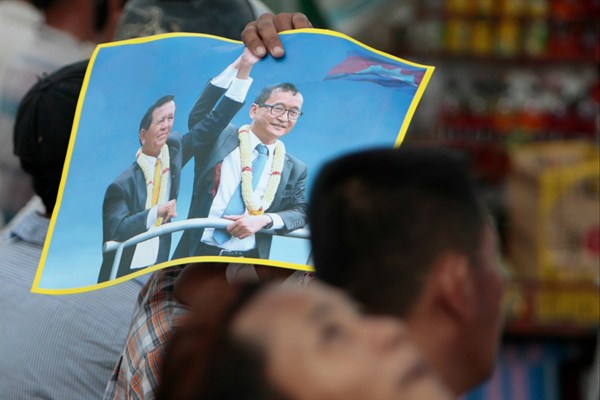Factional divisions within the banned opposition Cambodia National Rescue Party, or CNRP, came to the surface in December, when a party conference in Atlanta named exiled opposition leader Sam Rainsy its acting president. The conference was boycotted and its outcome rejected by supporters of Kem Sokha, the CNRP’s erstwhile president who remains under house arrest in Cambodia pending trial on charges of treason. In an email interview with WPR, Astrid Norén-Nilsson, associate senior lecturer at the Center for East and South-East Asian Studies at Lund University, Sweden, discusses the origins of the CNRP leadership dispute, and the implications of the opposition’s internal divisions for Cambodian politics.
World Politics Review: How long has the dispute between Sam Rainsy and Kem Sokha been simmering within the CNRP, and what caused it to spill into public view?
Astrid Norén-Nilsson: The CNRP was created in 2012 through the merger of the Sam Rainsy Party and the Human Rights Party, a move that at the time appeared surprising, not least considering the strong personalities of the respective party leaders, Sam Rainsy and Kem Sokha. Given the personalist character of Cambodian politics, the sense that there was a “Sam Rainsy group” and a “Kem Sokha group” within the CNRP persisted throughout the party’s history. However, both sides managed the friction because Rainsy, Sokha and their supporters were acutely aware that their political fortunes hinged on maintaining unity.

